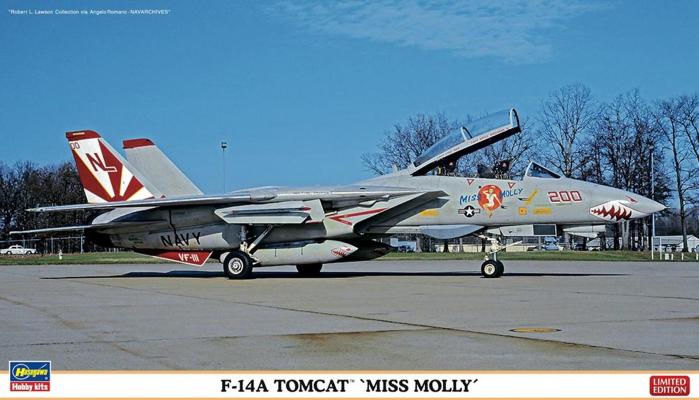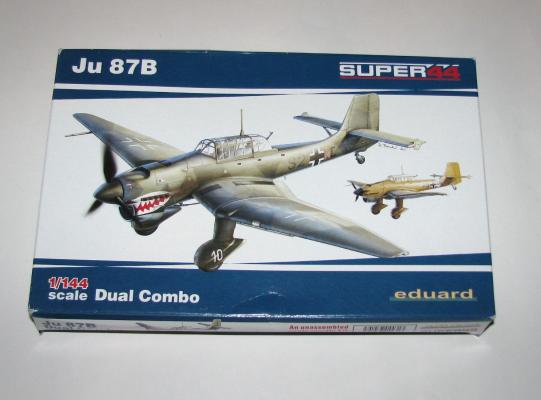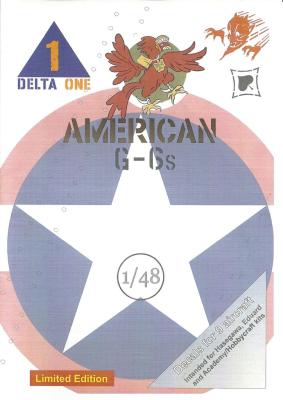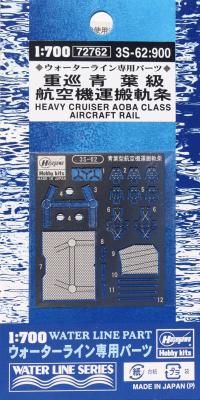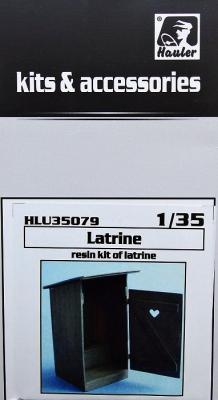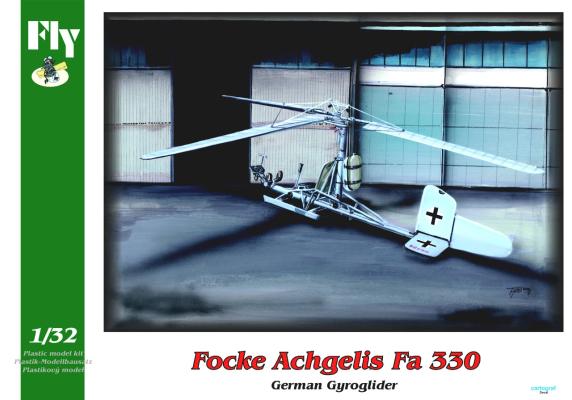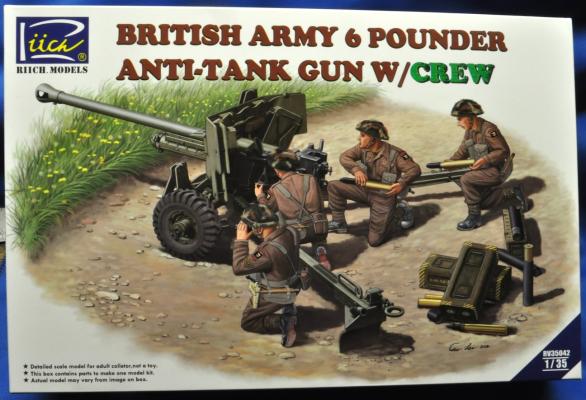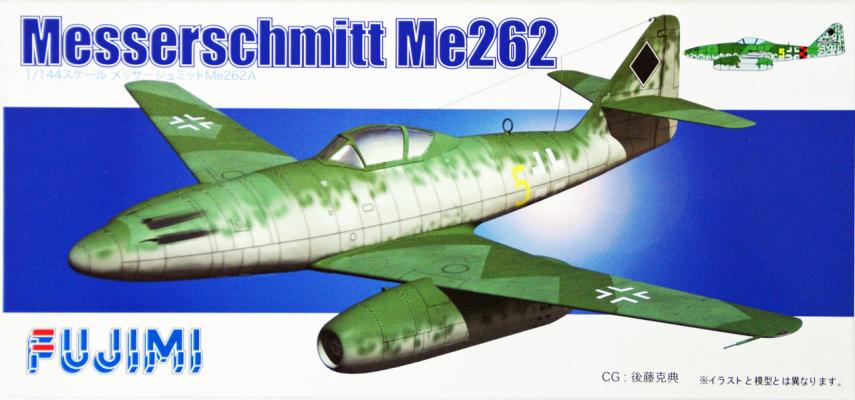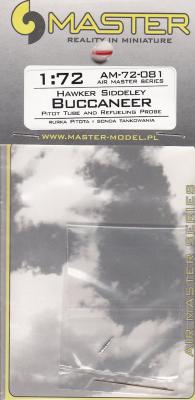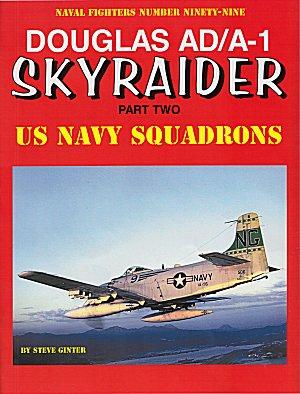OK, let me start by admitting it – this one kicked my modeling butt.
What's New
History
First flown in 1935 and making its combat debut in 1936, the Ju 87 was used until the end of the war, first as a dive bomber (Until the Luftwaffe lost air superiority and it became easy pickings for allied fighters), then as a tank buster, and finally as a night attack/harassment aircraft. Arguably its biggest contribution was the fact that it became the propaganda symbol of German air power and the Blitzkrieg victories of 1939–1942. Roughly 6500 Ju 87s of all types were built from 1936-1944.
The Kit
Upon opening the box you will find an 8 page color instruction booklet, 2 sprues of injected plastic molded in grey, a VERY small photo etch fret, 2 separately bagged canopies and a very nice decal sheet. The plastic is very clean and crisply molded… but panel lines?? They are really finely done but at this scale I’m not sure they are necessary. The P/E fret is…well….small and had me wondering if my eyes were going to handle this well!
Delta One Decal is a new European Manufacturer of decals. This is a Limited Edition decal sheet that covers 9 captured 109G-6s in American markings. All but one are /Trop version. The other one is a G-6/R3.
The decal sheet has vivid colors, with good color density, it is very shinny –on the sheet- and it perfect register. There is very limited carrier material, so I would expect them to blend in and have a very limited chance for silvering.
The camouflage options go from black with red trims, sand with red wingtips, olive drab, typical mid-war RLM 74/75/76 and even a natural metal finish! Indeed a very unique collection.
Bottom Line
Very specific and highly detailed photoetch set to equip one of only two Imperial Japanese Navy WW2 warships: heavy cruisers Aoba and Kinugasa.
Manufactured in the Czech Republic, this kit contains seven pieces of light gray resin, and an instruction sheet. All parts are nicely cast, and have a pour gate attached. The parts are contained within a small zip lock type bag.
The parts list shows a base, two sides, a back, roof, door and seat. The first order of business is removing the pour gates from the parts. A few passes with a razor saw made swift work of removing them. My sample had some flash in the seat opening and heart on the door, and a quick removal was accomplished with a #11 Exacto blade. The parts are nicely cast and no other work was needed to prepare for assembly and paint.
The Focke-Achgelis Fa330 was was a type of rotary-wing kite, known as a gyroglider or rotor kite. They were towed behind German U-boats during World War II to allow a lookout to see farther. Despite its advantages, the use of the FA 330 only resulted in a single sinking when U-177 used one to spot, intercept, and sink the Greek steamer Efthalia Mari on 6 August 1943.
The Allies came into possession of an FA 330 in May 1944 when they captured the submarine U-852 intact. After the war, the British government did successful experiments towing FA 330s behind ships and jeeps, but the development of the helicopter quickly occupied the attention of the military.
Fly models recently came out with two new kits in 1/32 scale, the Arado 234 Blitz jet bomber, and the Fa330 gyroglider. I am a big fan of odd and interesting German World War II aircraft and did not have one of their rotary wing craft in my collection. I couldn’t pass up the chance to give this kit a shot.
The primary anti-tank gun for British forces during the middle of World War II was the 57 mm Ordnance Quick-Firing 6-pounder, or just 6 pounder. First used in North Africa in the Spring of 1942, it replaced the 2 pounder in the anti-tank role. The United States Army also adopted the 6 pounder as our primary anti-tank gun under the designation 57 mm Gun M1. The 6-pounders were issued to the Royal Artillery anti-tank regiments of infantry and armored divisions in the western theaters, consisting of four batteries with 12 pieces each.
Fujimi has issued a Me-262 A-1A in 1/144 scale. I have built all the other scales from 1/72 to 1/32 and when this came up for review, I couldn’t resist. He kit comes with two gray sprues holding 21 parts and a small clear sprue with two canopies. A nice decal sheet with markings for one plane, a Me-262 A-1a Yellow 5 from 9/KG(J) 6 in April 1945. The instructions are on the back of the box along with a paint scheme and color references. The colors are wrong in a couple cases as the plane should be RLM76 on the bottom and RLM 81/82 on top with lots of mottling down the sides.
Master Model produces some fine metal components for aircraft kits. The metal pitots are really super, especially after you’ve broken the plastic one provided in the kit. In this case I found the pitot had totally broken off the Buccaneer. I had to replace it with a part from a new kit.
The pitot was a direct replacement.
The instructions give a very good idea of what needs to be done and how to do it. I’m very glad that at one point I bought a set of metric drills, so I have a .5mm drill bit. I used a pin vise. I had to work a bit to get the pin vise to go small enough to hold that small drill.
I’ve been hooked on Steve Ginter’s publications ever since I came upon his first ones which more or less amounted to just decent-size pamphlets in thickness, with no color. Since then, I have managed to glom onto a pretty good collection of his Naval Fighter Series and companion Air Force Legends Series as well.
Each successive Ginter book seems to set the bar a little bit higher, being a little better than the last one. For modelers or historians, they contain a wealth of information, photographs, drawings, specifications, and history. I consider them among the best reference sources in my stash for my facets of the hobby.

